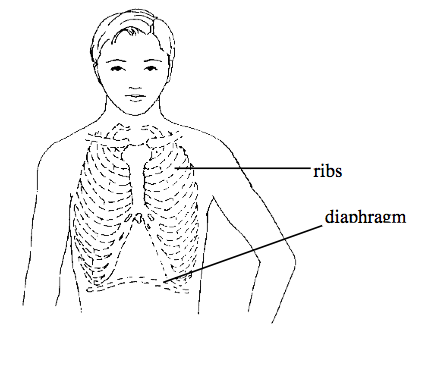Cystic Fibrosis Exercises
How does cystic fibrosis affect breathing?
Cystic fibrosis (sis-tick fi-broe-sis, or CF) is a condition that causes abnormal secretions of the respiratory, digestive and reproductive systems, and of the sweat glands. In the lungs, the secretion of thick and sticky mucus can clog up the airways. The clogged mucus increases the chance of infections. It also can lead to trapped "old" air, which causes shortness of breath.
Why do I need exercises?
Regular physical and breathing exercises, along with the use of antibiotics and lung care, can help prevent, relieve, or control breathing problems. It is very important that you and your whole family understand how CF affects your body and how each exercise helps, so that you can manage it
successfully.
How does regular physical exercise help me?
A fit body is strong and flexible. It uses oxygen more effectively, so less is needed to do an activity. A fit body is also able to resist or fight infections better and may result in fewer or shorter hospital stays. In addition, exercise will help to loosen mucus in the airways so it can be coughed up easier.
Some people with mild CF may be able to use regular exercise instead of one of the bronchial drainage treatments. Discuss this with your doctor. (Note: Check with your doctor to see if you need to take in more salt and fluid during heavy exercise or when the weather is hot.)
How do breathing exercises help?
Breathing exercises are an important part of the CF management program, and should be practiced regularly. The emphasis on relaxed exhalation will prevent air trapping.
Diaphragmatic breathing is a way of breathing that uses the diaphragm muscle to do the work. The diaphragm is shaped like a dome and is between your lungs and your abdomen (belly). See picture. It is the strongest and most effective muscle you have for breathing.
During most activities, this should be the main muscle doing the work of breathing. When your breathing rate increases, such as during exercise, singing, or playing a wind instrument, you need help from other muscles to breathe.
These "accessory muscles"Â are in your neck, shoulders, and chest. They are great helpers, but they take more energy to use. For this reason, you should always try to use your diaphragm to breathe, and use your
accessory muscles only when you are breathing harder.
To check which muscles are helping you breathe, look in a mirror. When you breathe in with your diaphragm, your belly expands right below your ribs. If you are using your accessory muscles to breathe in, you can see your upper chest and shoulders rise. The only movement you should see is a gentle rise and fall of your abdomen as you breathe in and out. If this is not happening, you may need special training exercises with a physical therapist to help you breathe better.
Your doctor may order physical therapy to help you plan and carry out an exercise program. This can be done while you are in the hospital or at home. If you are in the hospital, keep doing your exercises to maintain your fitness level.
Questions?
If you have any questions call your child's doctor or physical therapist.
Reviewed 6/2015 ©Copyright
This page is not specific to your child, but provides general information on the topic above. If you have any questions, please call your clinic. For more reading material about this and other health topics, please call or visit Children's Minnesota Family Resource Center library, or visit www.childrensmn.org/educationmaterials.
© 2024 Children's Minnesota
